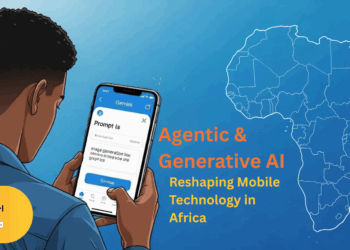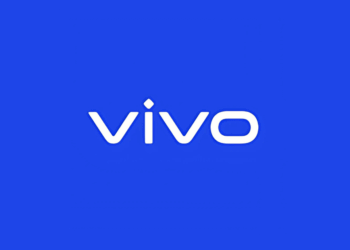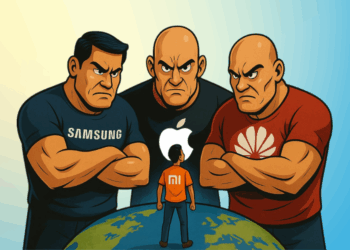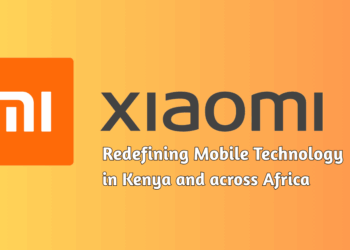A decade of shifting smartphone trends reveals a paradox: Oppo is rising across Africa but slipping in Kenya. This exposé delves deeply into the data, buyer personas, and strategic missteps—and lays out a bold blueprint for a comeback.
A Tale of Two Trajectories
In 2025, Africa’s smartphone market is experiencing significant growth. Shipments hit 19.2 million units in Q2 alone, marking nine consecutive quarters of growth. Yet Kenya—long considered East Africa’s tech bellwether—registered a 2% dip in the same period. Oppo, once a rising star in Kenya’s mobile landscape, now finds itself in a strategic paradox: growing 17% across Africa, but declining sharply in Kenya, where its market share fell from 19.34% in 2023 to just 7.78% by the end of 2024.
JuaTech Africa Lenses
To unpack this paradox, we anchor the analysis in three distinct yet interconnected lenses. First, The Data Disconnect examines the raw numbers behind Oppo’s continental rise and Kenyan retreat, revealing patterns that demand deeper scrutiny. Second, Persona Blindness explores how shifting buyer identities—especially among Gen Z, urban professionals, and rural-first adopters—have outpaced Oppo’s messaging and retail strategy. Third, the Comeback Blueprint provides a bold, actionable framework for Oppo to regain relevance in Kenya’s highly competitive market. These perspectives aren’t just analytical—they’re diagnostic. Because understanding Kenya’s divergence isn’t optional, it’s essential to winning Africa.
Perspective Lens 1 | The Data Disconnect
In 2021, Oppo stood tall in Kenya’s smartphone race, commanding 19.34% market share—a testament to its sleek design language, camera-first appeal, and urban youth resonance. Fast forward to 2025, and the brand has plummeted to 7.78%, barely edging out Xiaomi (7.46%) and trailing far behind Samsung’s dominant 30.32%, Tecno’s resilient 13.43%, and Infinix’s steady 7.6%. The numbers aren’t just disappointing—they’re diagnostic.
Across Africa, however, Oppo tells a different story. The brand has grown 17% continent-wide, fueled by aggressive retail expansion, localized assembly, and strategic positioning in Nigeria, Egypt, and Algeria. In these markets, Oppo’s A-series and Reno lines are winning over mid-tier buyers, while Experience + Service Stores are deepening brand trust and enhancing post-purchase engagement.
So why is Kenya resisting?
The contradiction is stark. Kenya’s urban youth—once early adopters of Oppo—are now gravitating toward Xiaomi’s ecosystem efficiency, Tecno’s affordability, and Samsung’s aspirational dominance. Oppo’s messaging, once aspirational and fresh, now feels out of sync with evolving buyer personas who prioritize battery life, software reliability, and after-sales support over megapixels and gloss.
This data disconnect isn’t just a statistical anomaly—it’s a strategic red flag. Kenya, often viewed as East Africa’s tech litmus test, may be signaling deeper misalignments in Oppo’s regional playbook. The brand’s retail footprint has thinned, its service infrastructure lags, and its product positioning lacks the clarity needed to compete in a market where value and trust drive conversions.
Is Kenya a warning sign of diluted relevance—or a missed opportunity to recalibrate and reclaim lost ground?
The answer demands more than market optimism. It calls for introspection, localization, and bold strategic pivots. Kenya isn’t just another market—it’s a proving ground for brand resilience, retail agility, and persona-driven storytelling. Oppo’s African ascent is real, but its Kenyan descent is revealing.
Oppo is growing across Africa but faltering in Kenya—why the contradiction? The next lens must move from diagnosis to prescription. Because if Kenya remains a blind spot, Oppo’s breakthrough may never materialize.
Perspective Lens 2|Persona Blindness
Kenya’s smartphone buyers in 2025 are anything but monolithic. They’re digitally native, economically diverse, and increasingly strategic in how they evaluate devices. Yet Oppo’s messaging—still anchored in design-centric aesthetics—has failed to evolve with these shifting buyer personas. The result? A widening relevance gap in a market that demands more than sleek finishes.
Key Buyer Personas in Kenya (2025)
| Persona | Traits & Needs | Oppo’s Fit | Xiaomi’s Fit | Tecno’s Fit |
| Urban Youth | TikTok-native, camera-first, price-sensitive | Weak | Strong | Strong |
| Mid-tier Professionals | Ecosystem-aware, brand-loyal, financing-driven | Moderate | Strong | Moderate |
| Retail Reps | Need spec clarity, trust, and training | Poor | Moderate | Strong |
| Rural Buyers | Financing-first, durability-focused, offline access | Weak | Moderate | Strong |
Urban Youth: The TikTok Generation
Kenya’s youth, who make up over 60% of the population, are driving digital trends through platforms like TikTok, Instagram Reels, and mobile gaming. They crave high-resolution cameras, long battery life, and affordability. Xiaomi’s Redmi 14C and Tecno’s Camon 40 deliver exactly that, with 50MP+ cameras, 5000mAh batteries, and sub-KES 20,000 price tags. Oppo’s Reno 12F, while stylish, lacks the financing flexibility and creator collaborations that resonate with this segment. TikTok-native buyers want storytelling, not just specs.
Mid-tier Professionals: Ecosystem Matters
This segment is growing fast, especially in Nairobi’s tech corridors and Ngong’s commuter belt. They’re ecosystem-aware—seeking seamless integration with wearables, smart TVs, and cloud services. Samsung dominates in this area, but Xiaomi is quietly rising with its Mi ecosystem. Oppo’s moderate fit stems from its lack of bundled services and weak financing partnerships. In a market where M-KOPA and Watu Simu offer KES 50/day ownership models, Oppo’s retail financing remains under-leveraged.
Retail Reps: The Frontline Influencers
Retail reps shape buyer decisions daily. They need spec clarity, trust, and training. Tecno excels here with aggressive in-store training and clear spec sheets. Xiaomi’s reps are increasingly visible on Jumia and Kilimall, offering live demos and financing calculators. Oppo? Minimal retail training, inconsistent spec communication, and weak presence on platforms like Jumia, where Kenyan buyers increasingly research before purchase.
Rural Buyers: Offline, Durable, and Financing-First
With 70% of Kenyans living outside urban centers, rural buyers prioritize durability, offline accessibility, and flexible payment options. Tecno’s Spark series and Xiaomi’s Redmi A5 are optimized for this segment. Oppo’s offerings, while visually appealing, lack ruggedness and offline retail penetration. Without strong partnerships with mobile money platforms or pay-as-you-go models, Oppo remains out of reach for this critical mass.
The Missed Opportunity
Oppo’s persona blindness is costing it relevance. By over-indexing on design and under-leveraging local storytelling, retail training, and financing, it’s losing ground to brands that speak the language of utility and aspiration. Kenya’s smartphone market isn’t rejecting Oppo—it’s simply choosing brands that better understand it.
Oppo is growing across Africa but faltering in Kenya—why the contradiction? The answer lies in personas, not just products.
Emerging Issues That Stakeholders Must Address
- Affordability Crisis: Kenya’s average smartphone price tripled from KES 5,955 in 2019 to KES 18,979 in 2025. Sub-$100 phones now account for just 32% of shipments. Oppo’s mid-tier pricing is misaligned with mass-market realities.
- Financing Gaps: While South Africa thrives on operator-led financing, Kenya’s models remain fragmented. Daily KES 50 plans work—but Oppo hasn’t integrated them deeply enough.
- Retail Fatigue: Oppo’s retail footprint is shrinking. Distributors lack incentives, and representatives lack the necessary tools. Compare this to Xiaomi’s aggressive retail expansion and Transsion’s micro-retailer credit model.
- Content Disconnect: Kenyan youth live on TikTok, WhatsApp, and Instagram. Oppo’s content strategy remains globalized, lacking a local flavor and partnerships with creators.
Perspective Lens 3: The Comeback Blueprint
Oppo’s decline in Kenya isn’t a death sentence—it’s a wake-up call. The brand’s design-first approach, while globally consistent, has failed to resonate with Kenya’s nuanced buyer personas. But the path to relevance is clear, and it begins with bold localization. Kenya’s smartphone market is not just growing—it’s maturing. Buyers are more informed, more aspirational, and more strategic. Oppo must evolve or risk irrelevance.
As a platform rooted in East African tech education and retail strategy, JuaTech Africa is uniquely positioned to help Oppo re–imagine its Kenyan playbook. We understand the personas, pain points, and platforms that drive conversions. Here’s how Oppo can reclaim its edge.
1. Retail Revamp: Equip the Frontline
Retail reps are not just salespeople—they’re influencers. Yet Oppo’s retail presence lacks the tools and training to convert interest into sales.
- Train the Trainers: Deploy spec matrices, buyer persona guides, and financing scripts across Nairobi, Ngong, Kisumu, and Eldoret. Equip reps to speak the language of utility, not just design.
- Bundle Smartly: Pair the Oppo A-series with earbuds, data plans, and M-KOPA financing. A KES 50/day ownership model bundled with Airtel or Safaricom data is a game-changer.
- Incentivize Loyalty: Introduce tiered rewards for reps based on conversions, upsells, and content creation. Tecno’s rep loyalty programs are winning—Oppo must match or exceed them.
JuaTech Africa can lead retail workshops, build reference matrices, and co-create persona-driven pitch decks to empower reps with clarity and confidence.
2. Content Strategy Overhaul: Speak Their Language
Kenyan youth don’t just consume content—they create it. Oppo must pivot from polished global ads to raw, relatable storytelling. Collaborations can go a long way in a brand revamp.
- Persona-Driven Campaigns: Launch TikTok series featuring Kenyan creators using Oppo for school, hustle, and lifestyle. Think boda boda riders vlogging with Splash Touch tech or students filming campus skits with AI-enhanced cameras.
- Localized Storytelling: Showcase real users—farmers, students, business executives, traders—using Oppo in everyday life. Authenticity converts.
- Retail Media Networks: Partner with Jumia, Kilimall, and Safaricom to run persona-based ads. Utilize geo-targeting to promote financing bundles in rural counties and creator collaborations in urban centers.
JuaTech Africa’s multi-platform content team can produce TikTok shorts, blog features, and podcast episodes that humanize Oppo’s tech and amplify its relevance.
3. Device Positioning: Reframe the Narrative
The Oppo A-series isn’t just affordable—it’s aspirational. But that story isn’t being told.
- Reframe the A-Series: Highlight durability, battery life, and camera power. Position it as the device for the hustler, the student, the creator—not just the budget buyer.
- Leverage Specs: Oppo’s IP-rated builds and Splash Touch tech are perfect for Kenya’s rugged use cases. The Reno Series packs a punch, and the 13 and 14 series are quite loaded when it comes to durability. Oppo needs to tell that story effectively and adequately. Compare it to Tecno’s Spark series and Xiaomi’s Redmi A2 in real-world tests.
JuaTech Africa can validate specs, build comparison matrices, and publish hands-on reviews that resonate with East African buyers if involved right from the onset.
4. Community Engagement: Build Buzz, Build Trust
Relevance is earned through engagement. Oppo must go beyond the billboard and into the community.
- Creator Collabs: Partner with TikTok influencers, YouTubers, and podcasters to build buzz. Sponsor content that shows Oppo in action—not just in the studio.
- Youth Events: Host campus tech fairs, photography contests, and mobile gaming tournaments. Let youth experience Oppo firsthand.
- Feedback Loops: Use JuaTech Africa’s platform to gather real user insights, test messaging, and co-create future campaigns. Build with the community, not just for it.
Kenya Is Not Oppo’s Blind Spot—It’s the Brand’s Proving Ground
Kenya isn’t just another market—it’s Africa’s tech bellwether. Where mobile money was born, youth culture thrives, and retail innovation sets the pace. If Oppo can’t win here, it risks losing the continent.
The brand’s decline in Kenya—from 19.34% market share in 2021 to 7.78% in 2025—isn’t about product quality. It’s about a strategic disconnect. Kenyan buyers demand relevance, not reputation. Retail reps need clarity, not confusion. Creators crave collaboration, not canned campaigns.
So here’s the challenge: Will Oppo listen—or will Kenya become its blind spot in Africa’s mobile ascent?
If Oppo partners with platforms like JuaTech Africa, retools its retail strategy, and embraces persona-driven content, Kenya could become its comeback catalyst. The opportunity is real. The urgency is now.
To retailers, creators, and strategists: Let’s build the blueprint. Let’s make Kenya the case study for what mobile success in Africa truly looks like.
To Oppo: The continent is watching. Kenya is speaking. Are you ready to listen?
— Lewis Wafula, Founder & Lead Strategist at JuaTech Africa | Empowering East Africa’s tech ecosystem through education, strategy, and storytelling.

















